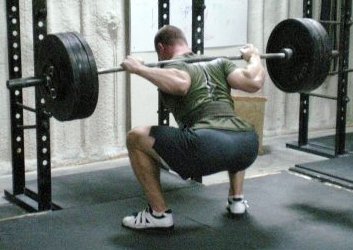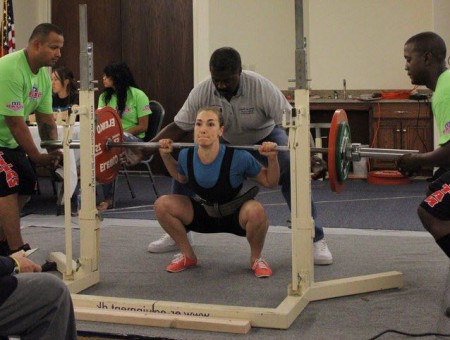My travels have led me to many gyms ranging from performance centers for special operations personnel to CrossFit gyms, from storage containers to globo gyms. There is a constant in all of these facilities: inefficiency.
Though I’ve rehashed topics like this ad nauseam in the past (see additional links at end), it’s always good to revisit them and put them back in the fore front of readers’ minds.
The squat is the most important exercise anyone can do for any goal.
Want to get stronger and/or bigger? You’ll need to squat since it strengthens the legs and hips through a full range of motion while the trunk isometrically maintains position; it’s a full body exercise. And since it’s training the majority of the musculature in the body, it garners a systemic (i.e. large scale hormonal) response in order to heal the damage done from an effective squat workout. This systemic response is what augments any other lifting you’ve done in the same training session and is the adaptive stress that spurns recovery and strength gain.
Want to lose body fat? The systemic stress response from squatting means hormones are working in overdrive to recover — a process that requires calories and stimulates muscle repair and growth. By using calories and growing new muscle — and doing this regularly with consistent training — the body is in a hormonal environment that facilitates body fat loss. To this day I’ve never had a female trainee not lose body fat on a strength training program.
Want to get faster? The squat takes the hips through a full range of motion and accentuates hip extension — the fundamental athletic movement. The squat also inherently involves a stretch reflex out of the bottom; the musculature about the hips and thighs moves into a position of tension and quickly shortens, or contracts, to explode out of the bottom. The squat perfectly prepares the related musculature for speed and power training as well as teaching the trunk how to stabilize the spine and hips to efficiently transmit force while moving (an important aspect of sprinting). The act of improving absolute strength will decrease the difficulty of repetitive movement, resulting in the capacity for higher or faster rates of work.
By regularly loading the muscles, tendons, ligaments, and bones with a full-body movement like the squat through a full range of motion, these structures adapt to be stronger, more dense, and ultimately less likely to be injured.
However, in order for all of this to be the case, the squat needs to be performed efficiently with adequate mobility. And the first god damn step is squatting all of the way down — a point in which the hip capsule (acetabulum) is below the top of the knee (or patella). If you’re reading 70’s Big, then you most likely squat to full depth on each rep, but statistically speaking there are a few of you who don’t.
As I’ve said before: Every time you don’t squat to depth, I pour a beer down the drain. And I HATE wasting beer.
For the sake of the gods, let’s make this simple: a cue to help reach depth on any squat type is “shove your knees out”. Sure, there is a lot of other things we could focus on like stance width, toe angle, torso alignment, breathing techniques, chest positioning, eye gaze, and so on, but anyone can squat to depth if they shove their knees out. The rest will figure itself out.
Shoving the knees out externally rotates the hips to point the femur out away from the mid-line. It helps clear the femur from impinging on front of the hip capsule and surrounding tissue and allows for more hip flexion, AKA depth. It also helps create the “torque” at the hip that Kelly Starrett frequently talks about and results in distributing the force application across the hips and thighs efficiently (more on that here). It can help if the “knees out” cue is originating at the outside of the hips (imagine a twisting motion on the lateral hip that results in the knees out).
Since I’m preaching to the choir about squatting to depth, it’s up to all of you to help your friends do the same. If you frequent a gym and establish relationships, then it is your honor-bound duty as a lifter to help them. Don’t be a dick and just ask them if they mind if you say something about their squat — most people are very open to this because they secretly have no fucking idea what they are doing and ultimately have six pounds of anxiety building in their chest. Don’t over-complicate the matter — make simple and quick adjustments and give them a single cue before sending them back to the bar. For example: narrow up the stance, change the toe angle, then just have them think knees out — the first two are passive cues that they don’t have to think about and the last is the only active cue they worry about.
Whether you’re a half squat abuser or you are guilty by proxy, spread the word that the only way to squat is to full depth.
More 70’s Big articles on squatting:
A Half Squat Is Not A Squat
Squat All of the Way Down
Low Bar vs High Bar Squatting


